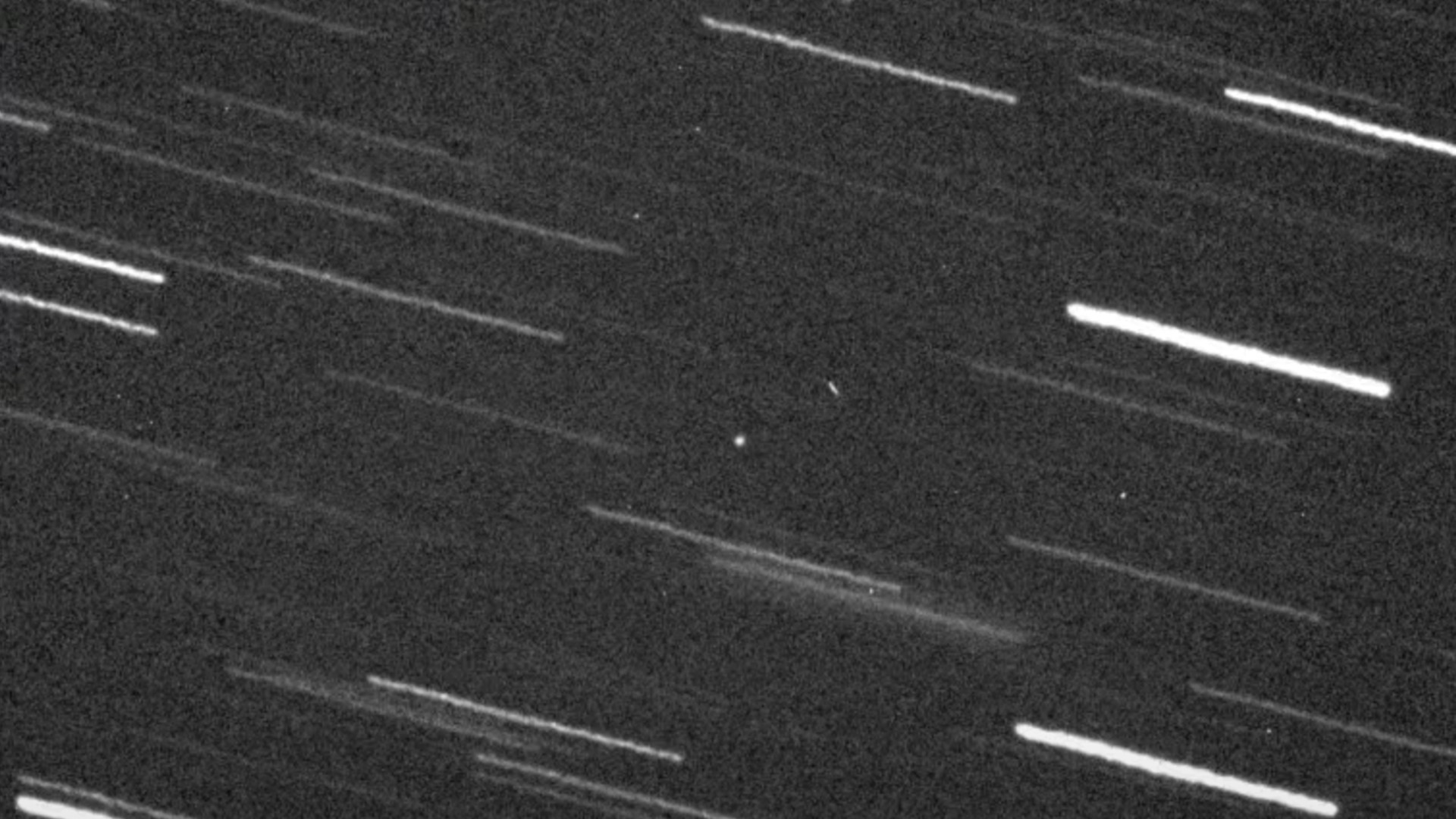Watch house-size asteroid 2023 MU2 fly by Earth at over 2,000 mph (video)
The near-Earth object 2023 MU2 was seen by the Virtual Project as it made a close approach to our planet on the evening of June 25.
A house-size asteroid raced past Earth at a staggering 2,000 miles per hour on Sunday, June 25. But even at this incredible speed, the near-Earth object (NEO) 2023 MU2 couldn't outrace observation by astronomers.
Capturing particularly impressive footage of the speeding asteroid traveling at two and half times the speed of sound was the Virtual Telescope Project operated by astronomer Gianluca Masi, who caught an impressive look at 2023 MU2 from Italy at 8:47 p.m. EDT on June 25 (0047 GMT on June 26).
The moving time-lapse image of the asteroid, which NASA estimates is between 13.5 and 30.1 feet (4.1 and 9.2 meters) in diameter, was created by Masi using several different telescope images and shows background stars racing past 2023 MU2, demonstrating its impressive speed.
Related: What are asteroids?
"The image above comes from a single 60-second exposure, remotely taken with the Celestron C14+Paramount ME+SBIG ST8-XME robotic unit available as part of the Virtual Telescope Project. The telescope tracked the asteroid," Masi wrote on the Virtual Telescope Project website. "At the imaging time, asteroid 2023 MU2 was at about 217,000 kilometers [135,000 miles] soon after the flyby, with the object already leaving us."
"To achieve this, our robotic telescope tracked at the very specific rates of the asteroid, this is why it looks like a sharp dot of light, while stars leave trails," Masi said.
Fortunately, astronomers could watch the passage of this asteroid with little concern. Discovered on June 16 and then confirmed on June 22 by the International Astronomical Union Minor Planet Center, 2023 MU2 posed no risk of striking our planet.
Breaking space news, the latest updates on rocket launches, skywatching events and more!
The asteroid still came pretty close, reaching a minimum distance from Earth, or perigee, of just 134,000 miles (215,000 kilometers) on June 25 at 7:19 p.m. EDT (2319 GMT). To put that in context, it is 60% less than the average distance between Earth and the moon.
The Virtual Telescope Project was able to stream the passage of 2023 MU2 on Sunday despite some issues with the weather in Italy. "We had to delay the start of our live imaging session because of the strong wind, then we succeeded," Masi said.

Robert Lea is a science journalist in the U.K. whose articles have been published in Physics World, New Scientist, Astronomy Magazine, All About Space, Newsweek and ZME Science. He also writes about science communication for Elsevier and the European Journal of Physics. Rob holds a bachelor of science degree in physics and astronomy from the U.K.’s Open University. Follow him on Twitter @sciencef1rst.

